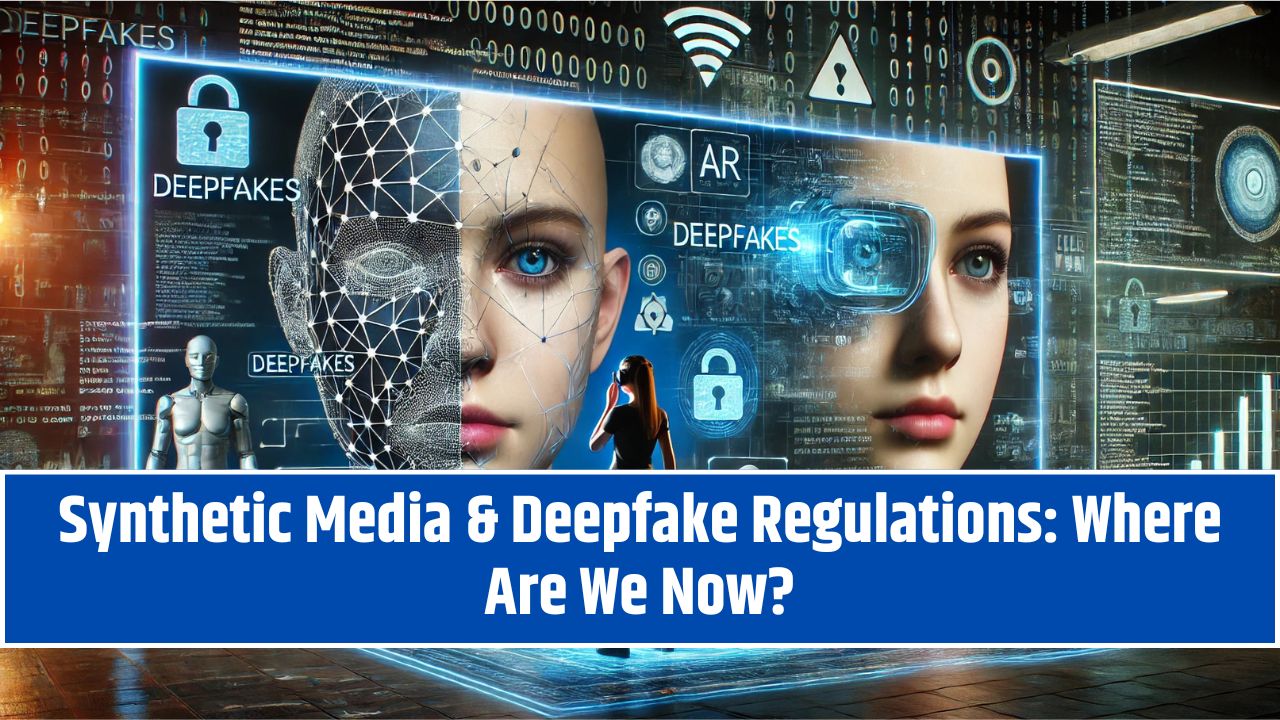“Can they really make a video of me saying something I didn’t say?”
Unfortunately: Yes. And it’ll look shockingly real.
We’re living in the deepfake era now—not just sci-fi speculation or Black Mirror episodes, but real-world politics, entertainment, scams, influencer marketing, and courtroom evidence. With synthetic media tools becoming easier, cheaper, and more advanced by the day, governments around the world are racing to regulate the line between creative innovation and total identity theft.
So where exactly are we with deepfake and synthetic media regulation in 2025?
Let’s break it down country by country, issue by issue—and spoiler: it’s still messy, but progress is happening.
First: What Counts as “Synthetic Media”?
Synthetic media = content generated by algorithms, often using AI, that mimics human appearance, voice, or behavior.
It includes:
- Deepfakes (fake videos of real people)
- Voice cloning
- AI-generated avatars or influencers
- Digital doubles used in film and advertising
- Entirely synthetic “people” created from scratch
Not all of it is malicious. Some uses are brilliant—like dubbing films more naturally across languages, or creating historical reenactments in education. But the tech has also been weaponized for:
- Political misinformation
- Celebrity face-swaps in adult content
- Financial scams using fake CEO calls
- Revenge porn
- False evidence in court
Hence: a new era of synthetic media law is emerging—trying to keep up.
Global Regulatory Landscape in 2025
Here’s where major countries stand right now
United States
Status: Patchwork of federal proposals + aggressive state laws
- DEEPFAKES Accountability Act (pending): Would require clear labeling of synthetic content, especially in political ads and public communications.
- Texas & California: Have active laws prohibiting malicious deepfakes in elections, porn, or defamation.
- FTC & DOJ: Can now fine companies or individuals using synthetic media to mislead or manipulate consumers.
2024 moment: FTC fined a crypto startup for using an AI-generated Elon Musk endorsement video in its ad campaign.
European Union
Status: Leading with sweeping digital protections.
- AI Act (effective 2025): The first comprehensive AI regulation in the world, includes clear obligations for deepfake disclosure.
- Any synthetic media used for advertising, influence, or information must be clearly labeled.
- GDPR 2.0 proposals are expanding to cover biometric data used in deepfake creation.
Penalties? Up to €30M or 6% of global revenue for noncompliance.
United Kingdom
Status: Moderate regulation + criminal law updates
- As of 2024, it’s illegal to create deepfakes used for sexual abuse or deception without consent (even if unpublished).
- Online Safety Act 2024 includes deepfakes under “harmful online content.”
- Civil penalties + criminal liability now apply to creators and platforms that fail to remove malicious synthetic media.
China
Status: Surprisingly strict & fast-acting
- 2023 deep synthesis regulations already enforced. Platforms must:
- Label AI-generated content clearly
- Prevent deceptive use
- Store original media + logs
- Individuals can be fined or jailed for synthetic impersonation.
Irony alert: While China cracks down domestically, it’s still a hotspot for overseas deepfake production services.
South Korea
Status: Proactive + tech-industry backed
- Passed a Deepfake Prohibition Law in 2024 criminalizing:
- Fake sexual imagery
- Political impersonation
- Fraud using synthetic audio
- Leading innovation in digital watermarking and traceable AI models.
Korea is pushing “responsible AI media” standards across their entertainment and gaming industries.
Other Notables:
- India: Considering criminalization of deepfake porn and fraud content; regulation lagging enforcement.
- Australia: Added deepfakes under cyberharassment laws. Still catching up on media-wide disclosure rules.
- Canada: Privacy laws are being updated to include deepfake consent & disclosure, especially in political ads.
Common Regulatory Themes Emerging
Despite patchy differences, most regulations fall into 4 buckets:
1. Labeling Requirements
Laws that require synthetic or AI-generated content to be disclosed clearly.
Think: watermarks, tags, or disclaimers like “Digitally Altered.”
2. Consent Laws
If your face, body, or voice is used without permission in a deepfake—especially for porn, scams, or ads—that’s a crime in many countries now.
3. Platform Accountability
Platforms like TikTok, Meta, and YouTube are now required to:
- Detect synthetic content
- Label it
- Remove it when reported
4. Election & Misinformation Controls
Fake political videos = real-world chaos. Many nations are enacting election-specific laws banning unauthorized synthetic impersonation of candidates or government figures.
The Tech Catch-Up Game: What’s Still Unregulated?
- AI Influencers who aren’t labeled as synthetic
- Voice clones in robocalls, scams, or AI content (esp. for non-famous people)
- Synthetic children/teens used in advertising (ethical + legal grey zone)
- Hyperreal avatars in gaming and metaverse spaces that replicate real humans without consent
There’s still no global standard on what counts as “too real to fake”—and detection tech isn’t keeping up with creation tech.
What Companies & Creators Need to Know (In Plain English)
OK (usually):
- Using AI avatars or voices for clearly fictional or stylized content
- Deepfake parodies with disclosure
- AI-generated influencers with transparency
- Using synthetic actors with consent + contract
Risky or Illegal (in many regions):
- Using someone’s face/voice in ads, adult content, or political videos without consent
- Undisclosed use of AI actors in branded videos
- Scams or impersonation using cloned voices (e.g., CEO asking for wire transfer)
- Fake news videos using synthetic anchors
Deepfake Detection: Can Tech Fix It?
- Tools like Reality Defender, Truepic, and Microsoft’s Deepfake Detection API are improving
- Digital watermarking and content provenance standards (like C2PA) are gaining momentum
- Blockchain-based timestamping is being explored for proof of originality
But here’s the truth: Detection is always behind creation. That’s why regulation and transparency are still our best weapons.
Final Thought: Synthetic Media Isn’t Going Away — But It Can Grow Up
Deepfakes aren’t just scary—they’re also transformative when used responsibly. Think virtual actors in global ad campaigns, AI voiceovers for accessibility, or creators reaching fans in 15 languages without losing their voice.
The future of synthetic media isn’t about banning the tech.
It’s about setting boundaries, demanding consent, and baking transparency into the creative process.
Because if we don’t get ahead of this, we won’t be able to tell what’s real, who’s speaking, or what to believe.
And that? Is the real deepfake danger.




